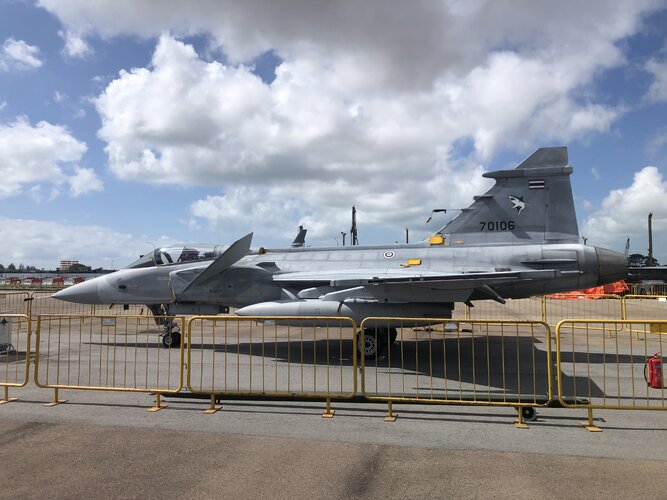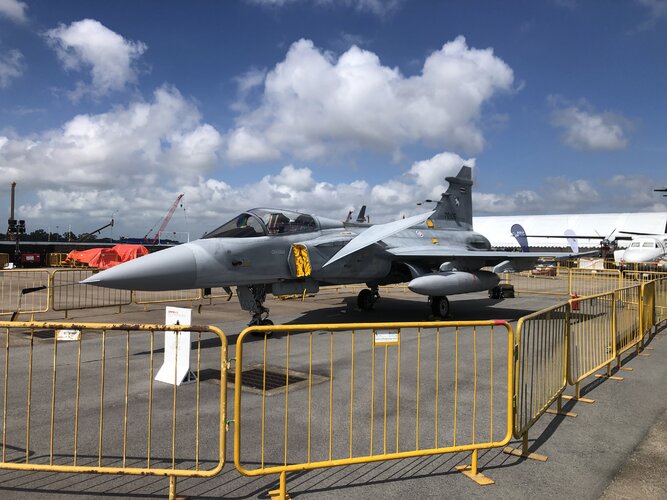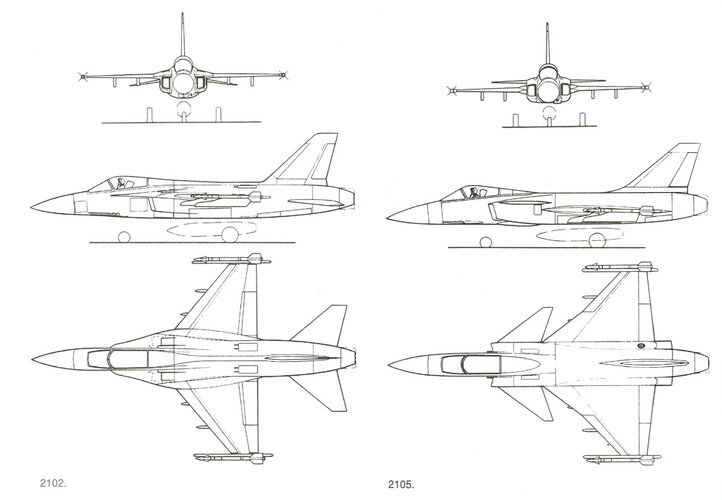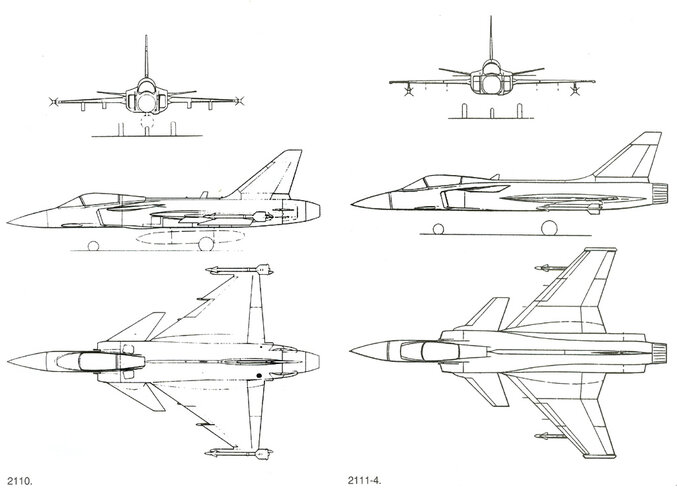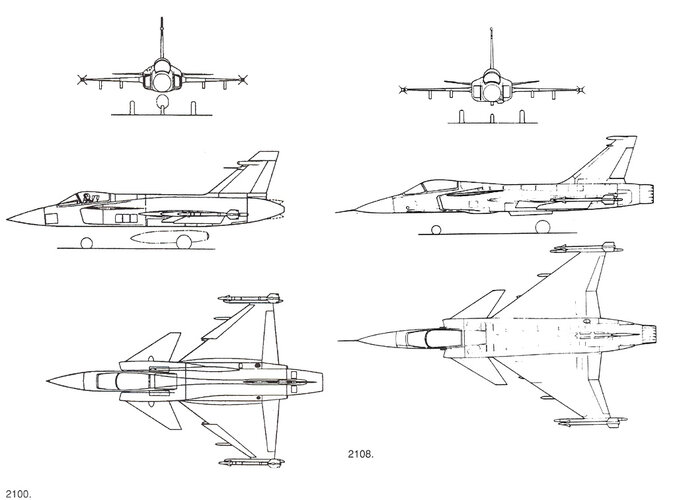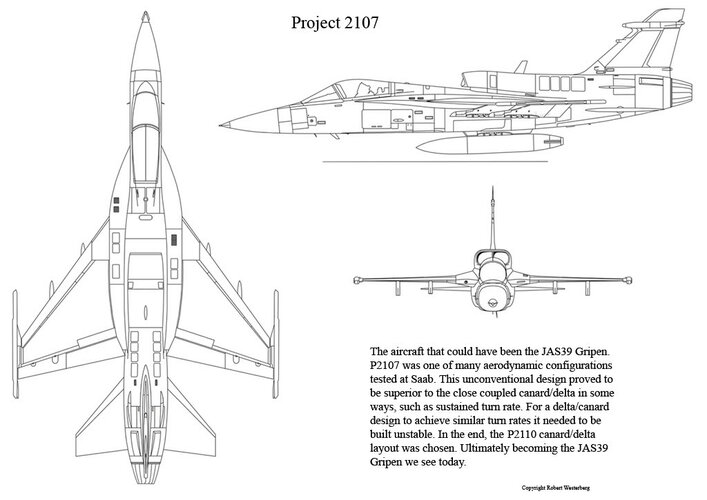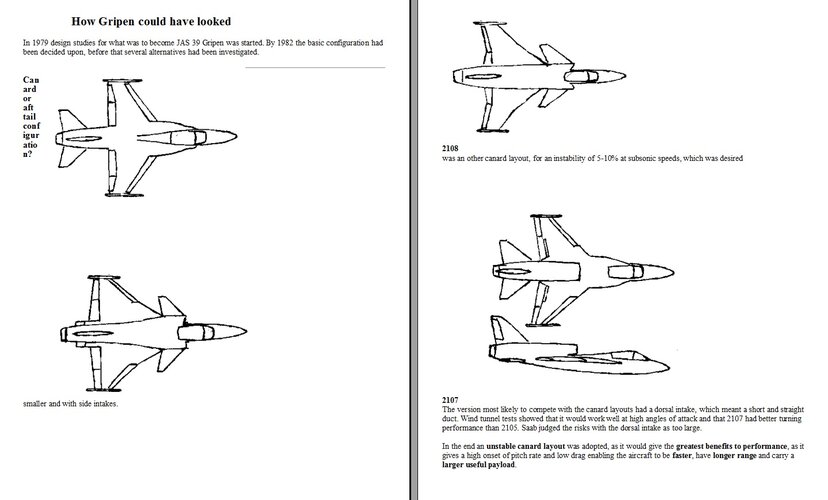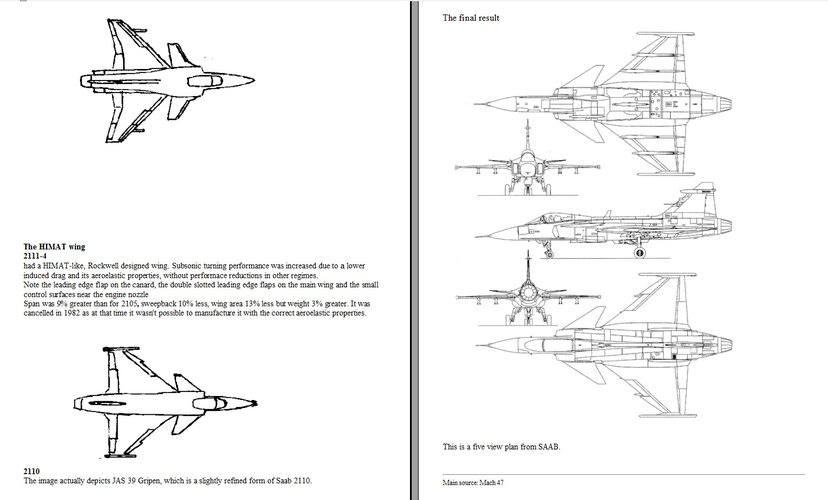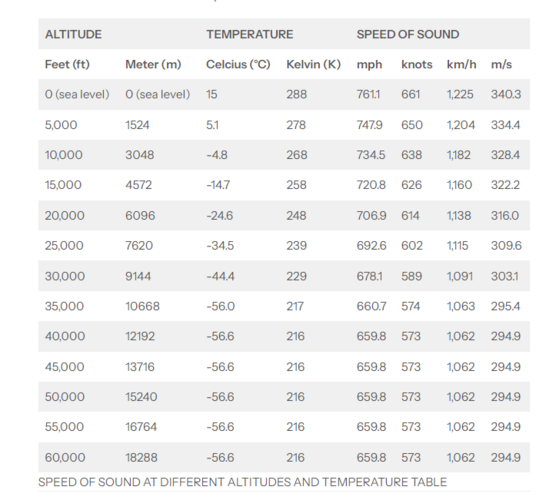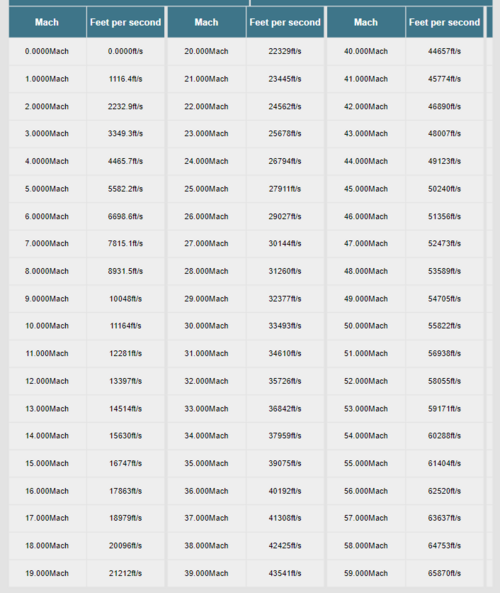Apparently, the third batch of Gripens (Gripen C/D) were produced with a redesigned radar section that featured enlarged radar back-end LRU bays, reflecting the NORA studies. Should be one of the reasons why Sweden scrapped so many Gripens by 2014 (should be more by now). Though this makes me wonder if the 66 Gripen As converted into C model also features a modified radar LRU compartment.
You are using an out of date browser. It may not display this or other websites correctly.
You should upgrade or use an alternative browser.
You should upgrade or use an alternative browser.
SAAB JAS 39A/B/C/D Gripen
- Thread starter seruriermarshal
- Start date
aonestudio
I really should change my personal text
- Joined
- 11 March 2018
- Messages
- 2,771
- Reaction score
- 6,737
WatcherZero
ACCESS: Top Secret
- Joined
- 22 May 2023
- Messages
- 594
- Reaction score
- 1,209
Hungary has bought four more Gripen C taking its 20 year old fleet from 14 to 18 (its existing 14 are on hire-purchase and that contract was also extended until 2035).
Hungary to get more Gripens from Saab | Shephard
The new order followed a 2022 announcement that Saab would modernise the Hungarian Air Force’s current fleet of 14 JAS 39C/D Gripen fighter aircraft.
www.shephardmedia.com
More on the same:
And one wonders:

 www.politico.eu
www.politico.eu
And one wonders:

Stroking the ego: Hungary’s Orbán gives his nod to Sweden’s NATO bid
Also helping was a deal to sell more Swedish jet fighters to Hungary.
More reporting:
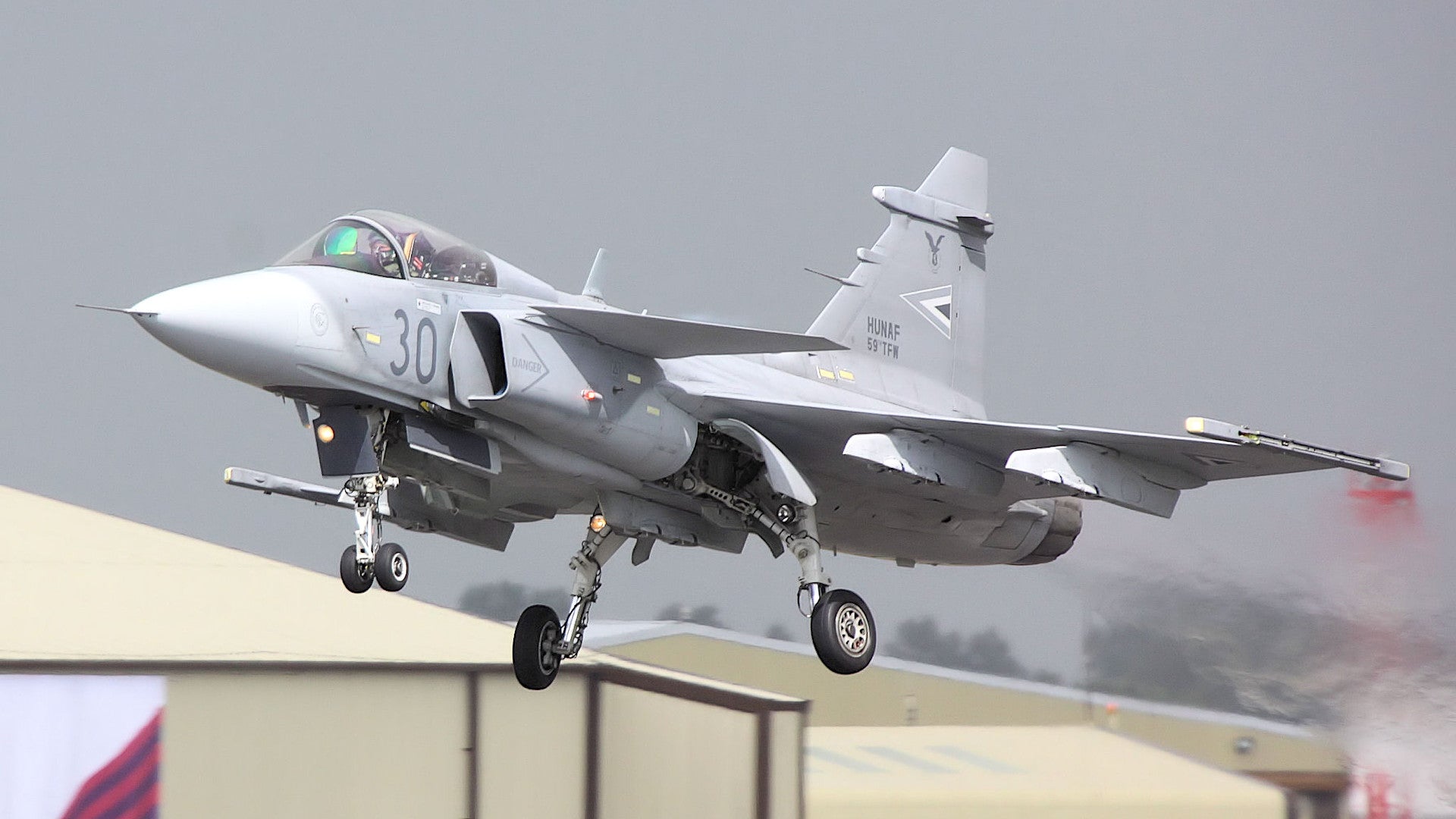
 www.twz.com
www.twz.com

Hungary Inks Deal For Gripen Fighters Ahead Of Sweden NATO Membership Vote
Hungary, which is now set to see its Gripen fleet grow from 14 to 18 jets, is the last holdout to Sweden joining NATO.
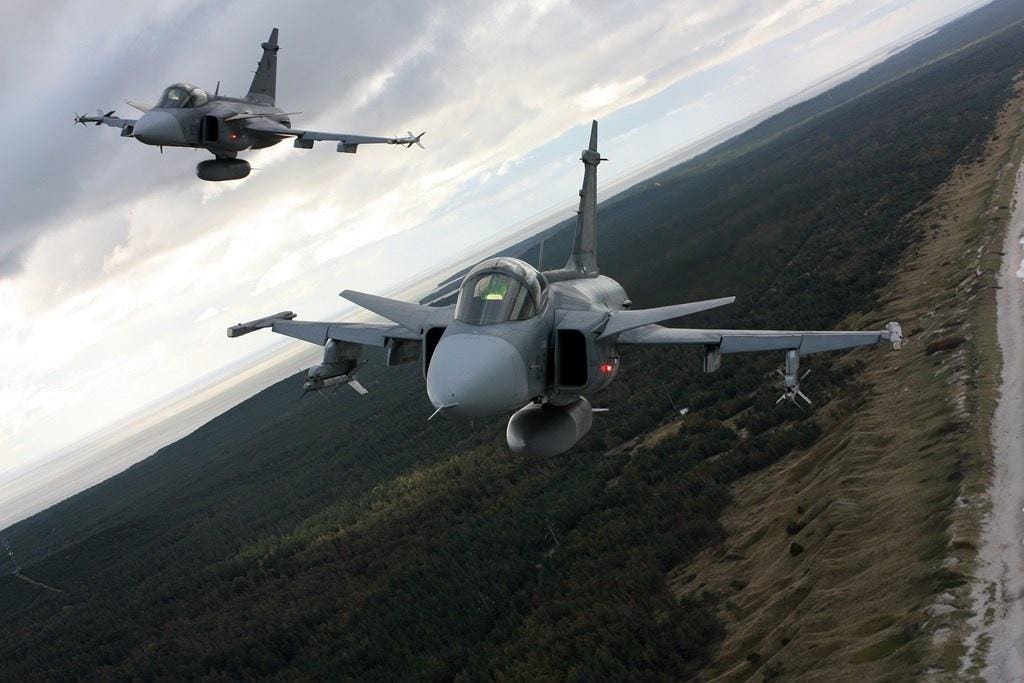
Could The Philippines Upgrade Its Air Force with Saab Gripens?
A report from the Singapore Airshow yesterday affirmed that the Philippines is close to entering negotiations to buy fighter jets from Sweden to bolster its defense.
 www.forbes.com
www.forbes.com
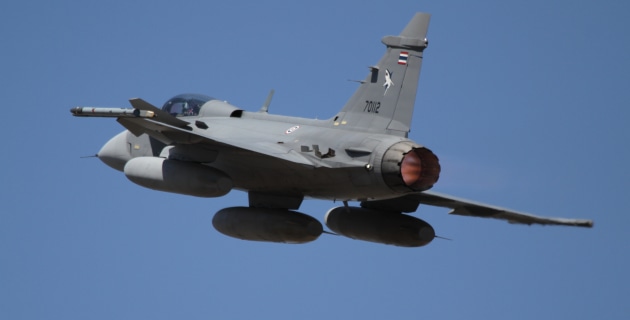
Singapore Airshow - Saab eyes regional fighter sales - Australian Defence Magazine
Saab sees further prospects for its Gripen combat aircraft in the Asia-Pacific region, according to a senior representative of the company at the Singapore Airshow last week | Nigel Pittaway
 www.australiandefence.com.au
www.australiandefence.com.au
- Joined
- 9 October 2009
- Messages
- 20,780
- Reaction score
- 11,727
Are there any known illustrations of Gripen's preliminary design? I'd be nice to see how much the aircraft has evolved from the drawing board to the roll-out.
BlackBat242
OK, I changed my personal text ;)
- Joined
- 10 April 2013
- Messages
- 1,084
- Reaction score
- 2,887

Sweden commissions study on Gripen fighter jet satellite launch capability - Breaking Defense
As adventurous as the Swedish study sounds, there is no guarantee that it leads to a future operational capability.

Sweden commissions study on Gripen fighter jet satellite launch capability - Breaking Defense
As adventurous as the Swedish study sounds, there is no guarantee that it leads to a future operational capability.breakingdefense.com
Bet me to posting this ! From the Boramae engine post and the link there, to Breakingdefense.com. Studies like that have existed since Project NOTS / CALEB, vintage 1958 in the wake of Sputnik. Or perhaps even before.
A Mach 2 fighter jet can scrap 1600 m/s out of an ascent to orbit 9000 m/s. Not negligible, except what matters is the raw energy rather than the delta-v: and bad luck, there is an exponential nested in the equation. So energy wise it is not much, plus the Gripen has a limited bombload, translating into a very limited rocket weight, plus hydrolox is a giant PITA but anything else has much less specific impulse... end result of the whole train wreck: perhaps 100 kg to orbit. Then again: cubesats. Albeit they existed since 25 years and air-launch is still stuck in limbo. The 800 pound gorilla is SpaceX F9 Rideshare, which is presently making a massacre of all the small rocket startups. Even Rocketlab's Beck is freaking out.
A decade ago or two, Dassault had similar plans for the Rafale. So had the Israelis from their F-15s. Or was it ALASA ? same plane, but DARPA, and it went nowhere. Also the russians from their MiG-31s.
We shall see...
paralay
ACCESS: Top Secret
The Russians have everything in perfect order with their MiG-31. The mass of the satellite is more than 100 kilograms


Bet me to posting this ! From the Boramae engine post and the link there, to Breakingdefense.com. Studies like that have existed since Project NOTS / CALEB, vintage 1958 in the wake of Sputnik. Or perhaps even before.
A Mach 2 fighter jet can scrap 1600 m/s out of an ascent to orbit 9000 m/s. Not negligible, except what matters is the raw energy rather than the delta-v: and bad luck, there is an exponential nested in the equation. So energy wise it is not much, plus the Gripen has a limited bombload, translating into a very limited rocket weight, plus hydrolox is a giant PITA but anything else has much less specific impulse... end result of the whole train wreck: perhaps 100 kg to orbit. Then again: cubesats. Albeit they existed since 25 years and air-launch is still stuck in limbo. The 800 pound gorilla is SpaceX F9 Rideshare, which is presently making a massacre of all the small rocket startups. Even Rocketlab's Beck is freaking out.
A decade ago or two, Dassault had similar plans for the Rafale. So had the Israelis from their F-15s. Or was it ALASA ? same plane, but DARPA, and it went nowhere. Also the russians from their MiG-31s.
We shall see...
No, a Mach 2 airplane flies at 680 m/s, not 1600.
Scott Kenny
ACCESS: Above Top Secret
- Joined
- 15 May 2023
- Messages
- 8,079
- Reaction score
- 8,328
Also removes a lot of atmospheric drag that gets counted as 9km/s to orbit. Orbital speed is only about 7km/s. The rest is gravitational and atmospheric drag losses.No, a Mach 2 airplane flies at 680 m/s, not 1600.
I forgot to add the altitude and angle of attack (30 degrees), which makes 1600 m/s (see attached paper). It is not just the plane velocity.
And yes, you have to consider the ascent losses. Everybody launching in orbit has to bit that bullet.
And yes, you have to consider the ascent losses. Everybody launching in orbit has to bit that bullet.
Attachments
Last edited:
100kg to orbit would be a major achievement. alot of Ground launched small sat LVs aim for that figure. DARPA ALASA which was supposed to be launched from F-15 was supposed to have a payload of 45kg, and that with a mono propellant design. No way in hell Gripen launches even half that and in fact, it's 2kg payload they are envisioning.Gripen has a limited bombload, translating into a very limited rocket weight, plus hydrolox is a giant PITA but anything else has much less specific impulse... end result of the whole train wreck: perhaps 100 kg to orbit.
Sweden Exploring Gripen Responsive Space Launch Capability | Aviation Week Network
The Swedish Air Force has begun a study into the possibility of launching a satellite from its Saab Gripen fighter aircraft.
Scott Kenny
ACCESS: Above Top Secret
- Joined
- 15 May 2023
- Messages
- 8,079
- Reaction score
- 8,328
What on earth are they using a 2kg satellite for? recon?100kg to orbit would be a major achievement. alot of Ground launched small sat LVs aim for that figure. DARPA ALASA which was supposed to be launched from F-15 was supposed to have a payload of 45kg, and that with a mono propellant design. No way in hell Gripen launches even half that and in fact, it's 2kg payload they are envisioning.
Sweden Exploring Gripen Responsive Space Launch Capability | Aviation Week Network
The Swedish Air Force has begun a study into the possibility of launching a satellite from its Saab Gripen fighter aircraft.aviationweek.com
100kg to orbit would be a major achievement. alot of Ground launched small sat LVs aim for that figure. DARPA ALASA which was supposed to be launched from F-15 was supposed to have a payload of 45kg, and that with a mono propellant design. No way in hell Gripen launches even half that and in fact, it's 2kg payload they are envisioning.
There are many different rocket parameters, notably the number of stages, the props, countless others. Payload varies accordingly.

Aldebaran (rocket) - Wikipedia
Did knew about that study, damn interesting stuff.
But why a Gripen? Isn´t there any AJ37 left that can be restored for that purpose (and reengined with something that push harder)?
Better MTOW, better lift (wing area >> by 50%). More sturdy Landing gear easier to strengthen with larger tires), taller also for larger carried rocket, Deeper volume to add fuel, older avionics, bulkier, that when deleted will increase the available volume for tanks and ancillary equipment etc...
One or two regenerated Viggen would certainly not bankrupt the SwAF.
Better MTOW, better lift (wing area >> by 50%). More sturdy Landing gear easier to strengthen with larger tires), taller also for larger carried rocket, Deeper volume to add fuel, older avionics, bulkier, that when deleted will increase the available volume for tanks and ancillary equipment etc...
One or two regenerated Viggen would certainly not bankrupt the SwAF.
Last edited:
WatcherZero
ACCESS: Top Secret
- Joined
- 22 May 2023
- Messages
- 594
- Reaction score
- 1,209
What on earth are they using a 2kg satellite for? recon?
Can be used in swarms for imaging or communication, there were 396 Nano-sat (1-10kg) launched last year and they've averaged around 300 a year for the last five years. Generally used for cheap always on imaging or when you need to temporarily surge communication bandwidth in a particular location. Also good as a platform for microgravity experiments by universities as you launch them for $10k-100k which brings them within many departmental science budgets.
Scott Kenny
ACCESS: Above Top Secret
- Joined
- 15 May 2023
- Messages
- 8,079
- Reaction score
- 8,328
Right. In swarms.Can be used in swarms for imaging or communication, there were 396 Nano-sat (1-10kg) launched last year and they've averaged around 300 a year for the last five years. Generally used for cheap always on imaging or when you need to temporarily surge communication bandwidth in a particular location. Also good as a platform for microgravity experiments by universities as you launch them for $10k-100k which brings them within many departmental science budgets.
This is launching ONE ~2kg satellite per Gripen.
WatcherZero
ACCESS: Top Secret
- Joined
- 22 May 2023
- Messages
- 594
- Reaction score
- 1,209
You launch a constellation shell of six, but one satellite fails... you have a 4 hour gap in coverage each day.
Its a rapid response launch capability to plug the gap which can be done with only hours notice, which would otherwise wait months if not years to piggyback on another launch going to a similar orbital trajectory (as orbital insertion would be beyond their onboard engine capabilities), these microsats only usually have a life of a couple of years so odds are you wont be able to repair the constellation before it decays.
Or if there's an urgent need to recon a particular location for example after a natural disaster or a military crisis.
Its similar to the US Space Command TacRS program which commissioned amongst others Rocket Lab for Victus Haze (An orbital tug built on a 120kg sat bus), this followed the test with an Firefly Alpha rocket to launch Victus Nox with only 27 hours notice (Firefly alpha has capability to launch upto six cubesats to low earth or polar orbits) and USSC previously developed the 6U Monolith satellite (a 6U sat has a max limit of 12kg) as a platform for rapid response surveillance. A 2kg sat would be a 1U or 2U cubesat.
If you dont think 1U or 2U is a meaningful size, look at a list of just some of the cubesats

 en.wikipedia.org
en.wikipedia.org
Its a rapid response launch capability to plug the gap which can be done with only hours notice, which would otherwise wait months if not years to piggyback on another launch going to a similar orbital trajectory (as orbital insertion would be beyond their onboard engine capabilities), these microsats only usually have a life of a couple of years so odds are you wont be able to repair the constellation before it decays.
Or if there's an urgent need to recon a particular location for example after a natural disaster or a military crisis.
Its similar to the US Space Command TacRS program which commissioned amongst others Rocket Lab for Victus Haze (An orbital tug built on a 120kg sat bus), this followed the test with an Firefly Alpha rocket to launch Victus Nox with only 27 hours notice (Firefly alpha has capability to launch upto six cubesats to low earth or polar orbits) and USSC previously developed the 6U Monolith satellite (a 6U sat has a max limit of 12kg) as a platform for rapid response surveillance. A 2kg sat would be a 1U or 2U cubesat.
If you dont think 1U or 2U is a meaningful size, look at a list of just some of the cubesats

List of CubeSats - Wikipedia
Last edited:
From link above (and for reading simplicity):
To complete also my post above on the merits of using an AJ37 instead of the smaller Gripen, let´s also remember that both Swedish fighters have fixed inlets, lengthening the time needed to accelerate to the launch speed. IMOHO, it would be easier to start with Viggen as, it has bigger inlets to work with for any engine upgrade.
Also Viggen ceiling and max Mach are superiors.
There are many types of CubeSats ranging from 0.25u to 16u.[43] In the Type column, the number corresponds to the (approximate) length of the CubeSat in decimetres. Width and depth are normally ten centimetres, or one decimetre. A 1U CubeSat measures approximately 1 × 1 × 1 decimetres, while a 6U CubeSat is six times the size, approximately 1 × 2 × 3 decimetres.[44]
To complete also my post above on the merits of using an AJ37 instead of the smaller Gripen, let´s also remember that both Swedish fighters have fixed inlets, lengthening the time needed to accelerate to the launch speed. IMOHO, it would be easier to start with Viggen as, it has bigger inlets to work with for any engine upgrade.
Also Viggen ceiling and max Mach are superiors.
Last edited:
Except that the Viggen has been retired for over 17yrs...IMOHO, it would be easier to start with Viggen as, it has bigger inlets to work with for any engine upgrade.
Also Viggen ceiling and max Mach are superiors.
Colonial-Marine
UAVs are now friend, drones are the real enemy.
- Joined
- 5 October 2009
- Messages
- 1,321
- Reaction score
- 1,018
Rather a shame just because I think it was a rather unique fighter. I don't know if Sweden would have been open to such a deal, but I think it would have been great if one of those companies that does aggressor training had bought a few of then-retired aircraft.Except that the Viggen has been retired for over 17yrs...
Many lavish the Gripen with endless praise but to me the Gripen seems to mostly be an updated take on the easy-to-operate lightweight fighter, the best comparison probably being with the Northrop F-20 which simply was at the wrong time to see any export success. The Viggen in comparison just seems like it was a lot more ambitious for its time.
Last edited:
Ainen
I really should change my personal text
- Joined
- 25 August 2011
- Messages
- 623
- Reaction score
- 657
I'd say that making a unique fighter (in this case, a fully competitive light fighter) was a far more ambitious goal.Rather a shame just because I think it was a rather unique fighter. I don't know if Sweden would have been open to such a deal, but I think it would have been great if one of those companies that does aggressor training had bought a few of then-retired aircraft.
Many lavish the Gripen with endless praise but to me the Gripen seems to mostly be an updated take on the easy-to-operate lightweight fighter, the best comparison probably being with the Northrop F-20 which simply was at the wrong time to see any export success. The Viggen in comparison just seems like it was a lot more ambitious for its time.
Scott Kenny
ACCESS: Above Top Secret
- Joined
- 15 May 2023
- Messages
- 8,079
- Reaction score
- 8,328
I'm still not entirely convinced that the Gripen is a fully competitive light fighter. Pretty sure it's only seen 1 major export sale, everything else has been countries leasing used Gripens that SwAF has replaced in their own ORBAT.I'd say that making a unique fighter (in this case, a fully competitive light fighter) was a far more ambitious goal.
Bluntly, I think it's just too small physically to have much growth room.
Those are more like surplus Gripenseverything else has been countries leasing used Gripens that SwAF has replaced in their own ORBAT.
Scott Kenny
ACCESS: Above Top Secret
- Joined
- 15 May 2023
- Messages
- 8,079
- Reaction score
- 8,328
And the E is bigger than the earlier versions.It´s not small. The E is comparable to a Mirage 2K and compete on the same market (albeit now regrettably completely deserted by Dassault).
The OG Gripen A-D ran out of fuselage volume to upgrade the electronics. It is 5 tonnes lighter than an F16C-50/52 at MTOW, 1700kg lighter than that same F16 empty. Gripen E/F is 500kg lighter than our F16C-50/52 empty, 2500kg lighter at MTOW.
Scott Kenny
ACCESS: Above Top Secret
- Joined
- 15 May 2023
- Messages
- 8,079
- Reaction score
- 8,328
Still not purchased new off the assembly line.Those are more like surplus Gripens
Ainen
I really should change my personal text
- Joined
- 25 August 2011
- Messages
- 623
- Reaction score
- 657
It(C/D fleet) is still getting a comprehensive electronics update right now(2023-29). Electronics aren't getting bigger with time, and not like vanilla gripens lacked any specific capabilities of a modern MRF.And the E is bigger than the earlier versions.
The OG Gripen A-D ran out of fuselage volume to upgrade the electronics. It is 5 tonnes lighter than an F16C-50/52 at MTOW, 1700kg lighter than that same F16 empty. Gripen E/F is 500kg lighter than our F16C-50/52 empty, 2500kg lighter at MTOW.
Gripen E, from what I understand, is mostly an export-driven change (range, especially supersonic; desire to get into delicious mirage 2000 niche).
Sweden itself didn't really need a heavier airframe that much. With NATO commitments it'll be handier, though.
Last edited:
Similar threads
-
SAAB JAS-39 Gripen Avionics & Swedish Datalinks
- Started by overscan (PaulMM)
- Replies: 33
-
-
-
Indian Air Force Sukhois Dominate UK Fighter Jets in Combat Exercises
- Started by sferrin
- Replies: 14
-
What if Sweden/Saab went for a different set of design criteria for the Gripen
- Started by helmutkohl
- Replies: 31

